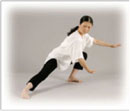It was overly hot here in Atlanta, and I had scheduled a morning in the dentist’s chair. It was not, however, one of those sessions of poke and drill, but a chance to use a gift of a teeth-whitening session. This was an entirely new experience for me and I was feeling just a little apprehensive. But I was looking forward to a much whiter smile.
When they told me I would have to sit still for two hours, I was shocked. Then panic set in. As some of you are aware, with my own ADHD I have only two speeds: full speed ahead and dead stop. I knew I didn’t have any gears that fell in between. I seriously wondered if I could really sit still that long, but faced with the challenge, I was going to try.
The technician began the prep work and soon I was fitted with a mouth full of rubber, space-age glasses that wrapped my face, and tilted in the chair so that a light was peering intently into my frozen grin. I had briefly considered reading via my Kindle, but the apparatus and position made that impossible. I did want to sit still… but how was that going to happen?
I soon became petrified that I would just explode and run out of there like a scared rabbit. I instantly remembered the kids who resembled deer in headlights as they approached one frightening school moment after another. I related to that feeling of insecurity, being scared, knowing that any move was the wrong one, unsure, completely frozen, and feeling that you were not quite alive on this planet.
As I sat there trying to calm my desire to flee, I tried to place myself in the minds of those youngsters who were just as frightened as I. My brain hopped relentlessly from one situation to another, dredging my web of experiences to find just what I had used to calm their fears and keep my need to be in motion in quiet submission. I had calmed many a youngster over these past fifty years. Surely I could control myself now!
 Then it hit me: I could try QiGong, the art of slow meditative movement, but more importantly, the act of slow, deep breathing to create relaxing control.
Then it hit me: I could try QiGong, the art of slow meditative movement, but more importantly, the act of slow, deep breathing to create relaxing control.
Long ago, there was a parent at my school who was related to a QiGong master. One year he gave a session to the teachers prior to the opening of school. We all felt relaxed, revitalized, and ready to take on the year’s challenges. We started using the breathing and movement to begin our weekly staff meeting and we all found it helpful. With his support and guidance, before long we began to have QiGong exercises at the beginning of the day, sometimes as part of recess.
We came to rely on the calming effect of QiGong. When minor upsets occurred during the school day—when classrooms went from okay to chaos in a flash—teachers initiated a QiGong break to regain calm and help the youngsters to learn to relax. It wasn’t a magic bullet, but through its soothing, relaxing effect, calm began to take hold.
We decided to do in-house research by observing our students. We began by rating the children on a behavioral scale that scaled acting-out behavior. The entire school was dedicated to the needs of the neurobiologically challenged youngster, so acting out was part of our daily lives. By the end of the first year, 80 percent of the youngsters prone to explosive outbursts, showed a 20 percent reduction in the number and frequency of their explosions. By the end of the second year, most of the youngsters showed the ability to initiate their own calming when given a hand signal reminder. At the end of the third year, youngsters who began off the scale in acting-out behaviors were beginning to find their own calming devices.
I do not present this as a research-founded program, but one that was easy to implement and showed great benefit for those who took part. After the first year, new students readily patterned those who were already in the program and those reticent to participate began to change their minds.
 Why did we choose QiGong? First, because it was readily available, but then we realized that the deep breathing basis of the movement was giving the youngsters and staff a feeling of calm that they were not used to experiencing. Secondly, you don’t just tell an ADHD youngster to stop moving. Using storylines and other patterning techniques, the youngster could follow the movements, their sequence and feel a part of the experience. As with dance and music, the body flowing together was significant for relaxing and calming.
Why did we choose QiGong? First, because it was readily available, but then we realized that the deep breathing basis of the movement was giving the youngsters and staff a feeling of calm that they were not used to experiencing. Secondly, you don’t just tell an ADHD youngster to stop moving. Using storylines and other patterning techniques, the youngster could follow the movements, their sequence and feel a part of the experience. As with dance and music, the body flowing together was significant for relaxing and calming.
I sincerely believe that most of us had never really known what that feeling of calm felt like. Regulating body, breath, and mind created a new sensation and laid a foundation for control that was not otherwise available. The storylines began with those available, but soon the children created some of their own as they had more meaning. Look to the end of the blog for a few samples.
Breathing my way to calm
Okay, so what happened to me in the dentist chair? I couldn’t stand sitting and doing nothing, and as soon as my mind went into problem solving or organizing mode, my fingers twitched because I couldn’t write notes (so necessary as my short-term memory is always absent). I began to do the deep breathing from my days with QiGong. I was a wonderful patient and voice student as I reached deeply into my diaphragm and brought air in an incredibly slow manner, releasing it just as slowly instructing my body to relax segment by segment from head to toe. I counted the breaths and moved in and out.
After the first fifteen minutes I discovered I could pace my breathing to seventy deep breaths every fifteen minutes. For the mathematically inclined this is about one breath every thirteen seconds to sanity. The first fifteen minutes were trial at best, but by the last I had it down pat. I was in control and frankly so relaxed I almost fell flat on my face when I got up from the chair. I had met my challenge, but also remembered so many of my youngsters who went from frazzled to calm. I’ve learned that some are still able to pull it together when our closing hand signal clues them.
 I gave up the daily QiGong practice long ago, but the calm I felt in the dentist’s chair that day led me to return to breathing and movement as my own therapeutic move toward wellness and control. And now I share the experience with all of you.
I gave up the daily QiGong practice long ago, but the calm I felt in the dentist’s chair that day led me to return to breathing and movement as my own therapeutic move toward wellness and control. And now I share the experience with all of you.
We all have times of being frazzled and spent. This gift is your small antidote to teacher burnout and a return to sanity. You don’t need formal training. The Internet and YouTube are full of instructional packages.
We began with simple breathing and movements. Eight Pieces of Silk was the pattern the youngsters felt indicated their success when they could accomplish this with slow, focused rhythm from beginning to end.
AWAKENING THE QI
Deep breathing. Very slow, gentle raising and lowering of body and arms. Good for opening a QiGong set.
 AUTUMN BREEZE BLOWS THE LEAVES
AUTUMN BREEZE BLOWS THE LEAVES
Gentle side to side turns of the waist and neck. Very calming and soothing.
Arms relaxed, out to the side like floating limbs and leaves.
CATCH A RAINBOW
Reach high into the air, breathe deeply.
Catch the rainbow.
Pull it to you. Push it to the ground
Wrap it around you, feel the colors making you warm and happy
Lullwater Student edition 1999
CLOUD HANDS
Gentle reaching to the sky, turn the waist and neck.
Place the cloud in your hands, put it on one hip, reach and catch another, bring it back, place it on the other hip.
Release each cloud back into the sky. It will go back again to the sun.
Lullwater Student edition 1999
 FLY LIKE AN EAGLE
FLY LIKE AN EAGLE
Good exercise for all areas of the back. Incorporates calf raises and sweeping shoulder movements. Also good for clearing the lungs of stale air and promoting better balance.
 EIGHT PIECES OF SILK
EIGHT PIECES OF SILK
Standing with feet shoulder width apart, arms at side.
1. Push up the heavens
2. Draw the bow
3. Raise the arms one at a time
4. Turn the head from side to side
5. Circle the arms (swaying the head and wagging the tail)
6. Stretch out the hand, grab, pull, and spear hand
7. Lift the jar and pound the legs
8. Bend the back
Execute the cycle once. Repeat most steps several times before proceeding to the next. General applicability, works the entire body.
References:
http://qigongforbeginners.com
QiGong for Beginners—simple QiGong concepts and the best QiGong guidance.
http://vimeo.com/11377350
Learn Zhan Zhuang QiGong—Standing Meditation.
http://adhdteacher.wordpress.com

No comments:
Post a Comment